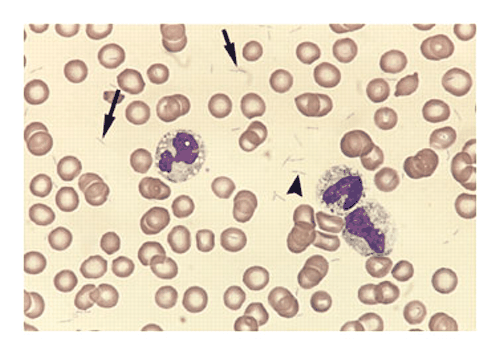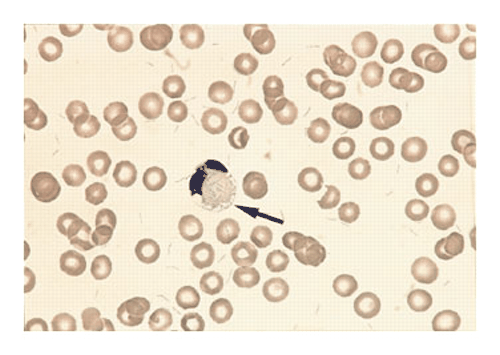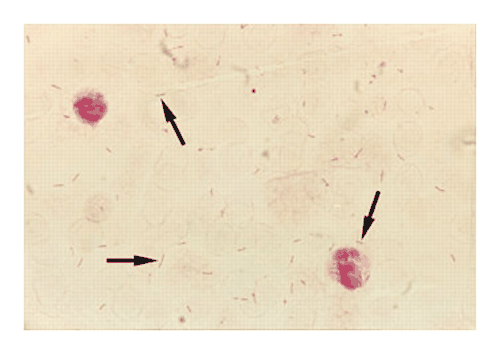ความคิดเห็นทั้งหมด : 4
ชาย 41 ปี ปวดท้อง ถ่ายอุจจาระเหลวและมีไข้ 2 วัน ชายอายุ 41 ปีมีประวัติปวดท้อง ถ่ายอุจจาระเหลวและมีไข้มานาน 2 วัน T 40°C, BP 139/59 mm Hg, and pulse rate 100 beats per minute. Physical examination revealed abdominal distention, diffuse tenderness, decreased bowel sounds, and poor dentition but was otherwise unremarkable. Lab: HB 9.4 g/dL, white-cell count of 11,700 /cumm and a platelet count 1,000/cumm. ในรูปทั้ง 3 รูป เป็น peripheral-blood smear ของผู้ป่วย รูป A และ B เป็นการย้อมสี MayGrünwaldGiemsa ส่วนรูป C เป็น Gram stain 1. ปัญหาของผู้ป่วยรายนี้มีอะไรบ้าง 2. พบความผิดปกติอะไรในรูปทั้ง 3 รูป 3. การวินิจฉัยเบื้องต้นคือ.............................................. 4. จะ manage อย่างไร Posted by : chpantip , E-mail : (chpantip@medicine.psu.ac.th) , Date : 2009-02-23 , Time : 08:14:54 , From IP : 172.29.3.68 |

